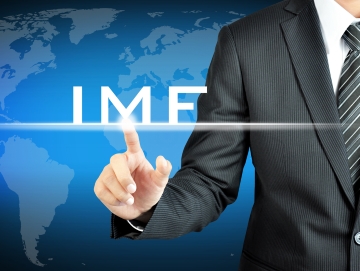History of the IMF with Gold

The Rise of The International Monetary Fund
After the devastation of the global economic landscape stemming from the Great Depression and two World Wars, allied nations led by the United States convened to devise a solution aimed at dampening future global economic unrest.
The outcome was the formation of a “global bank” dubbed the International Monetary Fund or IMF. Officially founded on December 27, 1945 the IMF is tasked with overseeing the international monetary system. The IMF works to aid economic cooperation and financial stability to ensure its members, 189 countries, “play nice” in the global economic sandbox.
The Initial Players
What was the price to enter this playground? When established, 25% of the entry fee had to be paid in gold. Basically, countries with larger GDPs and more powerful trade and economic influence paid a heavier entry fee. The IMF was open to any country joining so long as they paid the subscription cost. Historically, the IMF could accept gold for a repayment of a loan, but it did not allow gold to be part of the international monetary system.
The IMF and gold have a deeply rooted history that dates back to its founding. Gold was vital to the IMF’s founding and is vital to the reserve currency members, who make up the IMF’s Special Drawing Rights Basket (SDR). According to the IMF’s website, the IMF is one of the largest official holders of gold in the world with over 90 million troy ounces or 2,814 metric tons of gold.
Reserve Currencies and the SDR Basket
The Special Drawing Rights basket is a supplementary reserve asset used primarily by emerging and frontier countries to take out loans. The reserve currencies that make up the SDR basket include the U.S. Dollar, Euro, Yen, Pound Sterling and most recently the Renminbi or Yuan of China. The SDR helps the reserve currency countries fight inflation or a weakening of their currency by having a fixed amount available at all times for borrowers.
China's Unprecedented IMF Power
The IMF’s addition of the Yuan on October 1st, 2016 has solidified it as the third-largest component currency in the SDR basket, giving China unprecedented voting power within the IMF. Something the U.S. has not had to face since the IMF’s inception. The acceptance of the Yuan as an international reserve currency by the IMF has also enabled China to become a major international currency player, which is a direct threat to the power of the U.S. Dollar. Many claim that China’s long-term monetary policy goals are to completely dethrone the dollar as the primary international reserve currency.
How did the Renminbi become so powerful? Gold paved the way for entry. In order to obtain its status as a reserve currency, China had to meet a number of IMF guidelines, which primarily relied on their ability to significantly bolster gold holdings. According to Reuters, China's gold reserves rose to 59.24 million troy ounces at the end of October 2016. Gold is increasingly becoming more vital for countries as they look to compete with US dominance.
As noted in the Global Public Investor 2016 report, “Gold has become increasingly attractive as an alternative to reserve currencies, with the Euro, Yen, and Swiss Franc all weakening against the Dollar in 2015, while emerging-market economies have also been keen to diversify away from U.S. assets. Around $10 trillion of sovereign debt is providing negative returns as of June 2016, raising challenges for investors and creating risks of market upsets when interest-rate policies change. Deflationary pressures across many advanced and developing economies raise the importance of gold as a store of value and a hedge against financial market instability.”
China and many other countries continue to purchase gold, which will have ramifications on the individual strength of global currencies like the U.S. Dollar, borrowing power and economic stability. If China continues to compete with the Dollar, investors must be prepared for the Dollar’s possible weakening resulting in less purchasing power.

